|
|
Release Notes
A departure from our typically lightly peated single malt, our Heavily Peated Kilkerran is released twice per year at cask strength and around 45PPM. Although the maturation can vary, it is typically matured predominantly in Bourbon casks.
Kilkerran
The Distillery: Glengyle
| Established: 2000 |
| Silent since: False |
| Address: 85 Longrow, Campbeltown, Argyll, PA28 6EX, UK |
| → website |
In 1872 William Mitchell, a Campbeltown farmer built his own distillery called Glengyle. He was already an experienced whisky distiller, having previously owned the Springbank Distillery together with his brother John, also a farmer. But the two brothers had a severe quarrel about sheep and William left to join other brothers who had established the Reichlachan Distillery. He then decided that it was better to be independent.
75 years after Glengyle had last produced spirit a new company, Mitchell"s Glengyle Limited, was formed under chairmanship of Mr. Hedley Wright with the intention of operating a completely refurbished distillery at Glengyle. Mr. Wright is the great great nephew of William Mitchell, the original builder of Glengyle and also heads J&A Mitchell & Co Ltdm, the owners of the nearby Springbank Distillery.
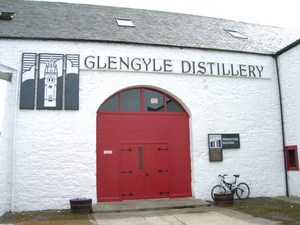
Actually buying the buildings was the easy part; The Glengyle buildings were but a shell inhabited only by flocks of pigeons which made their homes amongst the abandoned agricultural machinery. the herculean task of transforming the poorly maintained, dirty, but architecturally sound Victorian buildings into a new distillery, the first of the millenium, now began.
A further attempt to return the Glengyle buildings to their original function was made in 1957 when Campbell Henderson Ltd applied for outline planning permission to undertake a £250,000 reconstruction of Glengyle but once again plans for the reopening failed to come to fruition.
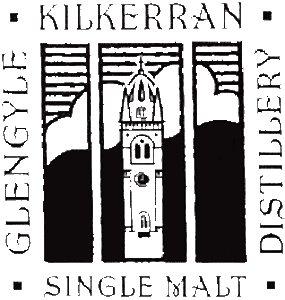
By now there were no vestiges left of the distilling plant or equipment and the buildings had become the depot and sales office of the Kintyre Farmers cooperative. The malt kiln had become a plant for the packaging of agricultural feedstuff and the Malt floors themselves had been partitioned off into a series of offices and stores. One of the warehouses had long since been converted into a garage and it seemed inconceivable that whisky would ever again be made on the site.
Glengyle Distillery was sold to Highland Malt distilleries Ltd in 1919 and resold in 1924 for the princely sum of £300. Like the majority of Campbeltown distilleries the business could not survive the nationwide economic downturn which followed the First World War and production ceased altogether in 1925. The entire stock of whisky at Glengyle was auctioned off on the 8th April that year.
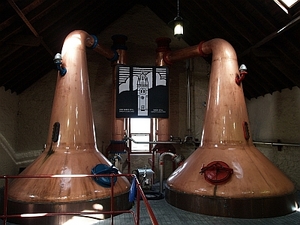
The Glengyle distillery buildings were rented as a rifle range to the Campbeltown Miniature Rifle club before being bought in 1940 by Bloch Brothers who also bought the still functioning Scotia Distillery. Because of the restrictions of the Second World War, Sir Maurice Bloch"s plans to reopen Glengyle came to nothing.
The new Glengyle distillery was officially opened by Dr. Winnifred Ewing and Mr. Hedley Wright, Chairman, in March of 2004. The first distillery to open in Campbeltown for over 125 years! The first distillery of the new millenium!
The first spirit distilled at Mitchell"s Glengyle Distillery legally became whisky in April 2007. In 2009 the first ever bottles of Kilkerran, "Kilkerran Work in Progress I" were released.
from Kilkerran.com
The Owner: Springbank
| Established: 1828 |
| Silent since: False |
| Address: 85 Longrow, Campbeltown PA28 6EX, United Kingdom |
Springbank Distillery is one of the last surviving producers of Campbeltown Single Malts. The distillery, located on the southern Kintyre peninsula, produces three distinct types of single malt Scotch whisky. These are branded as Springbank, Longrow and Hazelburn Single Malt. Springbank itself is the most popular variety, a two and a half times distilled non-chillfiltered single malt. Longrow is a highly peated single malt available in Bourbon, Sherry and an experimental Tokaji cask maturation. Hazelburn has only been produced at Springbank since 1997, is fully triple distilled and comes in a 8yo and 12yo variety.
2000 - The 10yo official bottling that hadn"t been available for a number of years is re-launched. This was roughly around the same time Signatory dropped of my shopping list; the price difference with the old 21yo was minimal. In the same year the first official bottling or Longrow with an age statement is released; the Longrow 10yo.
In the new Millenium
2008 - Early in the Summer some shocking news starts to leak out about the imminent mothballing of the Springbank distillery - at least for part of the year. Part of the staff is laid off because Springbank would produce significantly less whisky than usual in 2009. From what I understand, the Glengyle distillery will be closed as well. Apparently, the owners felt that they had sufficient whisky stocks for now. That"s a little odd, because for many years they claimed that they could keep raising their prices because they didn"t have enough stocks to satisfy demand anyway.
2005 - The first official bottling of Hazelburn is released with an age statement of eight years.
I"ve had the pleasure of sampling some fabulous older Springbanks, but by the time I had grown really mad about single malts, most of the "better" expressions were already priced well outside my financial comfort zone. So, Springbank never grew into a real favourite of mine, although the 21yo that was available at the end of the 1990"s (pictured above) was fantastic. Better yet, it was relatively modestly priced at less than 100 guilders.
Unlike its previous owner, the Glen Scotia distillery has managed to survive to this day. For many years it was the only remaining Campbeltown distillery, apart from their neighbours at Springbank of course. In fact, for a few years the relations between Springbank and Glen Scotia were extra neighbourly because a crew from Springbank came over to the Glen Scotia distillery every now and then to produce a little whisky (to keep the equipment in shape).
For many years the owners of Springbank claimed they could set such steep prices for their whisky because they didn"t have enough stocks to satisfy demand anyway. In such a (financially comfortable) climate it is hardly surprising that they (sort of) reconstructed the old Glengyle distillery a few years ago so they could increase production capacity. Unfortunately, a few years later the economical winds changed; Springbank & Glengyle were (temporarily) closed.
Even at that time, most Springbanks were released as expensive "ultra premium" bottles. As a result, a lot of them were exported to the USA - the country where massclusivity was invented and where many customers are sensitive to status. Or rather: the perception of status - which in turn is often linked to the price that has to be paid for certain products. America is not unique in that respect though - these misconceptions exist elsewhere too.
2010 - At the end of the 1990"s and during most of the noughties the prices for Springbank official bottlings were much higher than those for other, comparable single malt whiskies. After the brief mothballing of the distillery, their prices seemed much more in line with other Scotch single malts. (Or rather: most other brands had caught up ;-)
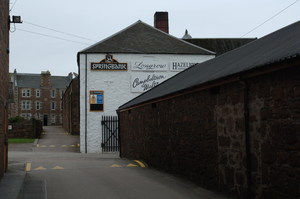
2009 - Springbank resumes part-time production again; 3 months of malting followed by 3 months of distillation.
Three years later in 1828 Springbank was built on the site of the older Archibald"s illegal still.
The quality of Springbank whisky became well enough known for in 1838 a certain John Walker of Kilmarnock to buy, in 1838, 118 gallons at 8s 8d (43p) a gallon.
The Mitchells first came to Campbeltown in the mid 17th century as settlers from the lowlands, some of whom were already maltsters. The story of Springbank begins a century later with the great-grandfather of the distillery"s current managing director. Archibald Mitchell, the son of a farmer married a cousin and learnt from his father-in-law (and uncle!) the art of malting. He also later acquired the art of distilling, though never the one of buying a licence. It was his sons Hugh, Archibald, John and William plus daughter Mary who took up distilling as a legal pursuit.
The first venture was Rieclachan Distillery in 1825 in which Archibald the younger was an original partner, and he was soon joined by Hugh.
Springbank is one of only two distilleries in Scotland to perform every step in the whisky making process, from malting the barley to bottling the spirit, on same premises: the other is Kilchoman Distillery who also grow their own barley. While a few others still maintain the first step in the process, the malting of barley (which is becoming more rare), Springbank also bottles their own whisky. The distillery is also one of the most inactive, having stills operating less than a third of the time.
Springbank is one of the few remaining family owned distilleries. Perhaps it is for this reason that nearly all of its whisky is sold as a single malt, with little of it finding its way into blends. Most blends are produced by larger conglomerates who tend to use the single malts from the distilleries that they own in their blends. Springbank produces two of its own blends, 5 year old Campbeltown Loch, and Mitchell"s 12 year old.
As distillery after distillery set up in Campbeltown, with the demand for malts from this area appearing insatiable, the business of the Mitchell family stretched further. John bought out the Toberanrigh Distillery built by cousin Alexander Wylie, while his sister Mary built Drumore Distillery in 1834 and William founded Glengyle in 1872.
Already in the late nineteenth century, Campbeltown whisky was of the highest quality and in enormous demand by blenders. Before the turn of this century it was highly peated and only short of being Islay in style. In the early part of this century the fashion in whisky moved away from these heavier types of whisky and Springbank altered accordingly, with malt being dried over coal rather than peat.
Barnard"s Campbeltown was a very different town from today"s, though. During the glory days of the town and the tip of the Kintyre peninsula, more that thirty distilleries were active in the area. Campbeltown was also known as "The Whisky Capital of the World". However, most of the distilleries were focused on quantity rather than quality because they were not able to keep up with the demand for their malt whiskies (especially from the US) anyway. So there was no incentive to try and improve the Campbeltown whiskies...
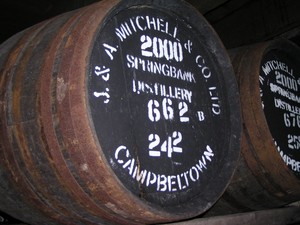
This attitude came back to haunt the Campbeltown distillers when Western economies were hit by an international recession after World War I and the prohibition in the USA brought (legal) exports to the America"s to a virtual standstill. One of the first victims was the Glengyle distillery, built circa 1873 by William Mitchell after a fight with his brother John at Springbank. The distillery closed down again in 1825 - and many other Campbeltown distilleries followed. The economical downturn proved to have disastrous consequences for the "volume" whisky distilleries in Campbeltown. The owner of the Glen Scotia distillery became so depressed that he drowned himself in the artificial lake that was constructed as the distillery"s water supply. Some people say his ghost still haunts the buildings...
Whisky is liquid courage. Many people - mostly men - have performed acts of inspired bravery (and foolishness) whilst under the influence of "the water of life". And while the cheaper blends and bourbons usually affect the more primitive parts of the brain (truncus cerebri), it seems single malts often appeal to the higher brain functions in the cerebrum.
So, while the symptoms of low budget alcohol abuse often include primitive behavior like shouting and brawling, those of us that prefer to abuse our alcohol in style find ourselves inspired to start writing books, composing music or plan a voyage to Scotland where the whisky was made. Travellers that have the time and means to stay for a few days can visit all the main whisky producing regions and one of its distilleries.
However, from a traveller"s perspective, visiting the Campbeltown area is a small nightmare. One has to make a long trek to the Southern tip of the Kintyre peninsula on the Western coast of Scotland to reach Springbank - or the nearby Glen Scotia distillery. Except for the distilleries, there"s not much happening in Campbeltown. And even for the people that want to "get away from it all" for a few days, Springbank is a fairly poor destination. It"s one of the few distilleries that isn"t surrounded by the lush Scottish countryside - located in the middle of a busy town.
Many distilleries welcome visitors with open arms, but when some of the maniacs visited Springbank in 2005 they didn"t seem very pleased to see us - or the other visitors for that matter. So, for me the best thing of the trip was the night I spent in the same hotel that Alfred Barnard stayed in when he visited the area over a century ago.
With the success of a nearby coal mine, fuel to run the distilleries was plentiful and cheap. And profits for the distillers were handsome. All the major distilling dynasties in the town, the Colvilles, Mitchells, Mactaggarts and Fergusons built large gentlemen"s houses in keeping with the money pouring into the bank accounts and the newfound status of respectability they had acquired. By 1891, Campbeltown with a population of just 1,969 was reputed to be the richest town per capita in Britain.
But every bubble bursts. And in the 1920s, with one or two notable exceptions, distillers in the town had begun cutting corners in the making of their whisky to meet the demand.
Soon blenders began to turn their backs on Campbeltown and looked for consistently better malt elsewhere. Only Springbank, Glen Scotia and Rieclachan maintained their quality and their order books open as one by one the other distilleries fell by the wayside.
In 1934 it was decided to close Rieclachan, leaving only Springbank and Glen Scotia, as is the case today.
Trivia:
- Springbank distillery was built in 1828 by two brothers, Archibald and Hugh Mitchell. Rumour has it that their father had already been running an illegal distillery at the same location for years. The Springbank distillery is still owned by the Mitchell family - and so is the (sort of) reconstructed Glengyle distillery.
- Apart from the "Springbank" brand the distillery produces two other "deluxe" brands, Hazelburn and Longrow.
- Frank McHardy has been working at the distillery for many years; Helen Arthur"s guide from the 1990"s already lists him as distillery manager and he was still involved with Springbank when it (temporarily) closed down in 2008. url="http://www.springbankdistillers.com"
from Wikipedia, Malt Madness
